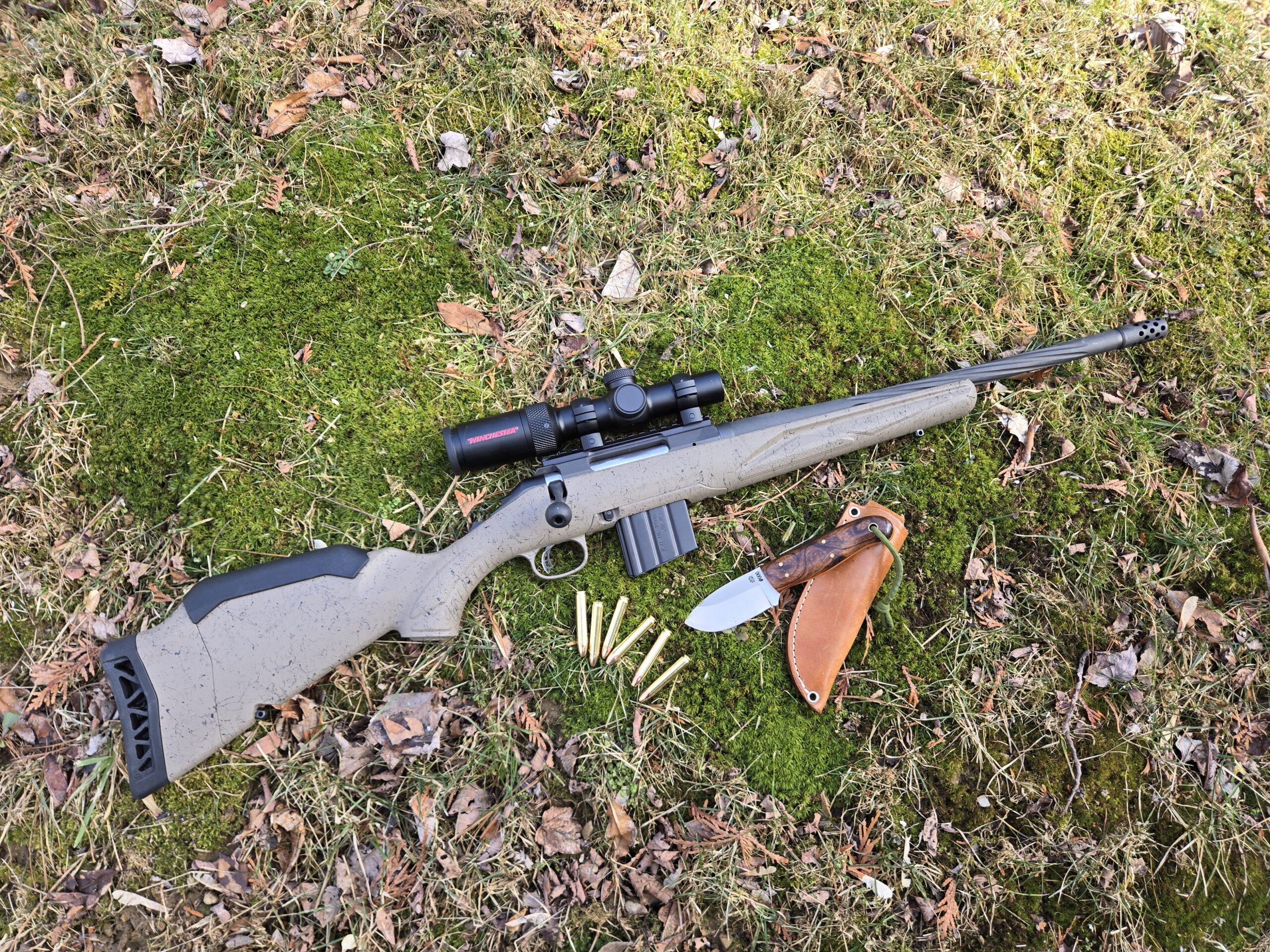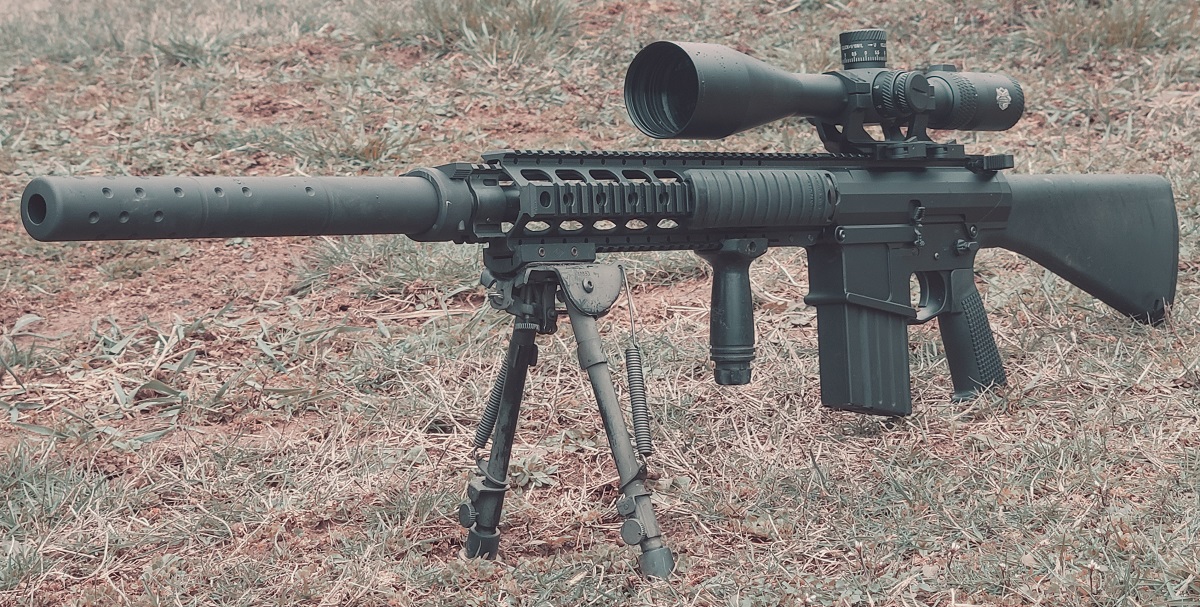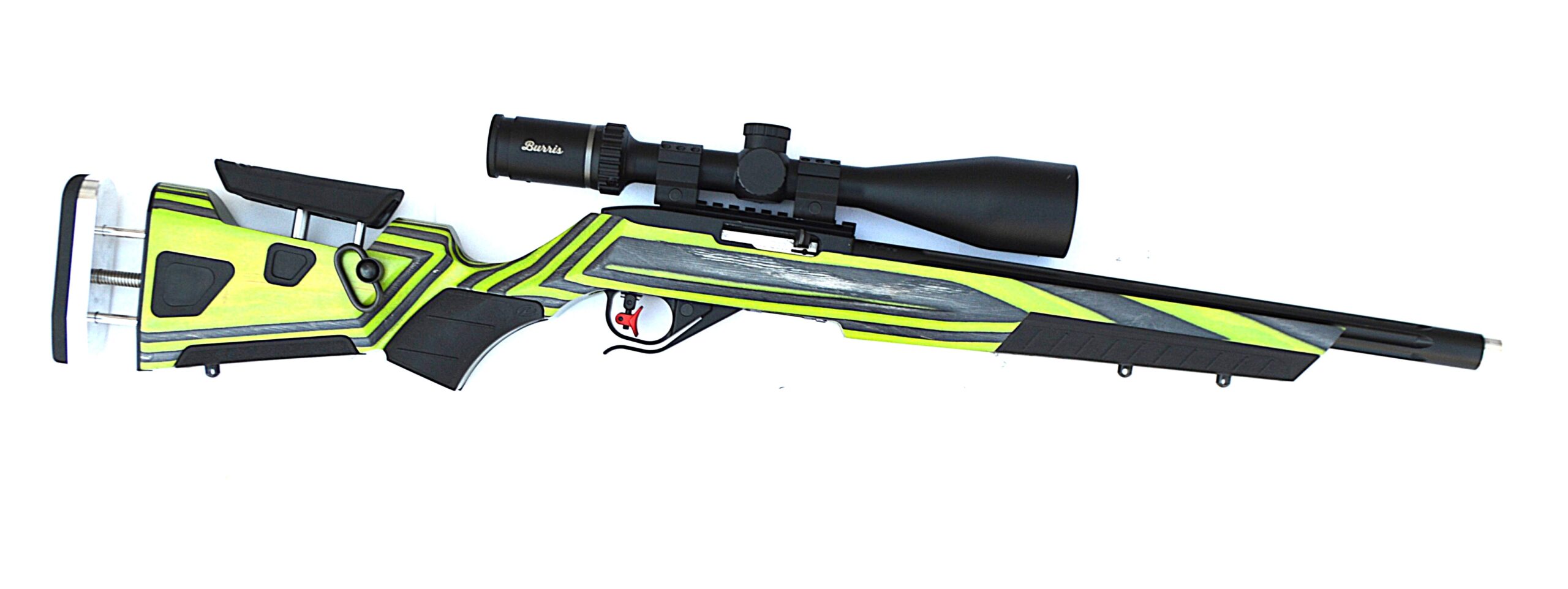Today’s sniper rifle is modular. It offers a choice of barrel length and caliber to accomplish the mission at hand. It’s probably built on an aluminum chassis with a fully adjustable stock and a swappable pistol grip. And it’s designed to feed from an easily-removable box magazine. With a configurable rail system for optics and accessories. It’s extremely accurate.
If this is the formula for the 21st century sniper rifle, then the Ritter & Stark SX-1 MTR delivers on all counts.
https://www.youtube.com/watch?v=MldEqIyrXnc
Ritter & Stark is imported, distributed, and sold directly by EuroOptic. TTAG’s SX-1 MTR (which stands for Modular Tactical Rifle) review sample was graciously loaned to us by Performance Guns of West Haven, Utah, who also carries and sells the Ritter & Stark line.
TTAG received the rifle with .300 Winchester Magnum and .308 Winchester barrels and the necessary components to swap between the two. The SX-1 MTR is also available in, or convertible to, .338 Lapua Magnum. It all came in a lockable, rolling case with custom-cut foam and latches that will crush your f**king thumb.
The optional case is nicely designed, with pieces of foam that can be removed and reinstalled as needed to accommodate optics, different barrel lengths, and other accessories.
Since that two-scopes-in-the-case photo already gave it away, let’s jump to one of the best features of the SX-1: the optic mounts directly to the barrel. While many other rifle designs offer swappable barrels and calibers, the vast majority mount the optic to the receiver, not the barrel. In the best scenario, this requires keeping different zero information for each barrel so the scope can be dialed appropriately.
In the more likely scenario, it means zero must be verified every time the barrel is removed and replaced. Even the best rifles with the most precise barrel locking systems tend to exhibit varying degrees of zero shift after a barrel is removed and reinstalled. After all, it’s a separate piece from that which the scope is mounted.
While the SX-1 MTR’s system is, presumably, more expensive and heavier, as each barrel has its own rail aligned on pins and bolted in place, it’s undeniably more consistent. Furthermore, each barrel can have its own, dedicated optic and zero can always be zeroed out on the dials. Which is certainly handy for remembering where you started and getting back to it.
It can also mean not over-glassing or under-glassing a given barrel. For instance, swap to a short .308 barrel with a lower-zoom, lighter weight optic for shorter engagements while a larger, higher-zoom optic can live on the .338 LM barrel. Ritter & Stark sells SX-1 barrel-mounted optics rails with up to 40 MOA of cant built in, so even the rail itself can be customized for the operator’s intended use.
Also of note is that the SX-1’s barrel, chamber, and locking lugs are all machined from a monolithic piece of steel. Most bolt action rifle barrels begin at the chamber face, meaning the bolt lugs actually lock into the receiver. Locking the bolt to the barrel, instead, ensures more precise alignment, headspace, and repeatability.
Ritter & Stark says:
The rifling is processed in a CNC-controlled electrochemical machine. This avoids the transmission of thermal effects and mechanical stress to the material. Furthermore, this process allows us to produce barrels with unique uniformity and within tolerance zones that were not possible in a serial production before.
Swapping barrels is quite simple. Four bolts mount the handguard to the receiver. Remove the handguard to make way for the barrel. Three bolts clamp the barrel inside of the receiver. With the rifle bolt unlocked from the barrel, once the three barrel mounting bolts are removed the barrel simply slides out the front of the gun.
Assuming the operator is swapping calibers, the bolt must also be changed. But, unlike many other multi-caliber rifles, only the bolt head is exchanged on the SX-1. With no tools necessary, it’s quick and painless to remove the striker assembly, switch the bolt head, then reassemble.
Magazines, too, vary based on caliber. An easy-to-swap, polymer magazine well is retained by a single bolt. Multiple designs are available to accept different types of magazines for different calibers. In .308, the included magazine well used AR-10 style magazines while, in .300 WM, it accepted AI mags.
With these parts swapped over, simply slide the new barrel into the receiver, insert the bolt and lock it into battery to set perfect headspace, then tighten down the three barrel mounting bolts.
At this point, reinstalling the handguard is actually optional. The flat surface under the front of the receiver, which acts as a central balance point for handy carrying and resting of the rifle, can be removed and replaced with a Picatinny rail. While mounting a bipod farther forwards is more stable, going sans handguard reduces weight by a few ounces and facilitates more rapid barrel removal and installation.
At the back of the SX-1 resides a highly-adjustable buttstock, though any AR-15 stock can be used. Length of pull, cheek rest height and angle, and recoil pad height are all easily adjustable in the field without tools. A sliding panel on the bottom of the stock covers a Picatinny rail for the addition of a monopod.
A folding stock adapter connects stock to receiver, locking in place in both closed and open positions. This mount can be switched around so the stock folds to either the left or right side. Additionally, the receiver is threaded to accept a standard AR-15 receiver extension (buffer tube) so a stock, including the SX-1’s, can be mounted directly without the folding mechanism.
A neat, rubber foam-filled cutout in the stock’s tube allows it to be folded and locked in place even with the bolt left in battery.
I found the stock easy to release from folded position but difficult to release from extended position. That said, when extended and locked in place it’s rock-freakin’-solid. It gives zero indication that it’s capable of folding — no wiggle, no wobble, no play at all.
Further modularity is achieved through the SX-1’s use of Remington 700-compatible triggers and AR-15 grips. The included trigger is highly adjustable, crisp as can be, and even offers its own safety should the operator choose to use it instead of the built-in, 3-position safety on the SX-1’s bolt.
On the range, the SX-1 maintained this overall feel of solid precision. It operated smoothly — at least to a point — and was easy to adjust to my liking.
While the surface treatment (a form of nitriding, I believe) and design of the bolt is supposed to preclude the need for or use of lubricant, after many boxes of .300 WM followed by a handful of boxes of .308, the Texas heat and dust were getting to my SX-1 and the bolt became sticky. I began to appreciate the flat surface at the top rear of the receiver, which was an absolutely perfect place for my thumb to provide additional bolt-opening leverage.
Another couple boxes of .308, however, and the bolt was sticking something fierce. I removed it, hit it lightly with some spray-on sunblock as I found myself in the field without gun cleaning/lubing products, and was pleasantly surprised that it was immediately back to feeling like one of the smoothest actions out there.
Feeding and ejection were always smooth and reliable. Magazines inserted easily, locked in place with a satisfying snick, and dropped free when released.
Ergonomics are spot-on. Everything is right where it should be and feels great. And if that isn’t the case, the offending part is almost certainly adjustable and/or swappable.
For accuracy testing I installed the excellent SIG Optics TANGO6 5-30×56 scope, removing the full-length Pic rail from the handguard to provide clearance for the bell. Funny thing, just the week prior I had loaned my set of high 34mm rings to Patrick R from The Firearm Blog, and only later did I find out that he asked for them to review an SX-1 MTR. What a punk.
Federal Gold Medal 175 grain shot a handful of groups between 0.55 MOA and 0.7 MOA
Federal’s Gold Medal Berger loads the very slippery Berger Juggernaut projectile into the superlative Gold Medal cartridge. Not all rifles will handle the bullet’s secant ogive properly, but the SX-1 certainly did not object. Typical groups were about 3/4 MOA.
Heck, even the very uniquely-shaped and lightweight Hornady 125 grain ETX round, which incidentally didn’t feed smoothly up the SX-1’s feed ramps, shot comfortably sub-MOA.
These solid results from the .308 barrel contrasted with the frustrating initial accuracy that I experienced from the .300 WM barrel.
With three different Hornady loads with 150, 178, and 195 grain bullets, accuracy wavered from about 1.8 to 3 MOA.
Hornady Precision Hunter 200 grain ELD-X was good for a few ~1.1 MOA groups.
Having been told this gun shoots .300 WM at sub-half-minute accuracy, I figured something was wrong with me. So I forced Nick to shoot it. After all, he shot Olympic small bore on his college team, shot CMP High Power Rifle competition, etc.
Unfortunately for the SX-1 but fortunately for me, he replicated my results almost exactly.
Nick’s best group was also with the 200 grain ELD-X and was also 1.1 MOA (okay, okay, I measure it as 1.08). At 400 yards we shot a 1.05 and a 1.15 MOA group with the same ammo.
Which is accurate enough to hit a small steel plate fairly consistently at that range.
And man oh man, does that .300 WM carry a lot of energy. Those plates flew up to 20 feet off the hood of the car on which they sat.
After speaking with Ritter & Stark and the guys at Performance Guns, I learned that the rifle can be a bit picky with ammo. They suggested Nosler AccuBonds and also said they’d send a few handloads my way.
 A Nosler Custom Competition 168 grain (#53164) projectile was used in the handloads, loaded to a cartridge overall length of 3.488 inches. As I only received 10 of these rounds, the pressure was on to shoot a couple of properly indicative, 5-round groups.
A Nosler Custom Competition 168 grain (#53164) projectile was used in the handloads, loaded to a cartridge overall length of 3.488 inches. As I only received 10 of these rounds, the pressure was on to shoot a couple of properly indicative, 5-round groups.


Which I think I did. Due to the paper tearing in a ragged manner these groups are difficult to measure, but as near as I can tell the top group is a just a hair over half MOA and the bottom group is easily under half MOA. So, as it turns out, the SX-1 MTR in .300 WM really can shoot.
 At this point I had also collected some other factory ammo options, so continued punching holes in paper in a light Texas drizzle. I call the photo above “Jeremy was here.”
At this point I had also collected some other factory ammo options, so continued punching holes in paper in a light Texas drizzle. I call the photo above “Jeremy was here.”
Federal Edge TLR 200 grain, which I must say is some of the coolest looking ammo I’ve seen, turned in solid groups hovering around 1 MOA (the group above is ~1.03 MOA).
I had 10 factory Nosler Trophy Grade 180 grain AccuBonds, though one of them suffered a squashed tip. I figured it would be an obvious flyer, but the two groups above turned out nearly identical in size (1.9 MOA).
Finally, a few groups with Winchester Expedition Big Game Long Range, which shoots the 190 grain Nosler AccuBond-LR bullet. Groups ranged from 1.62 MOA, as seen above, to 1.9 MOA.
Overall, I suspect the SX-1’s .300 WM preference is really about cartridge overall length and how far the bullet has to jump to the lands. It’s rare that factory ammo is loaded to the extreme end of the acceptable OAL range (SAAMI spec for .300 WM is 3.340″ maximum OAL so these handloads are almost 15 thousandths longer than that), and the Ritter & Stark SX-1’s .300 WM barrel may have been chambered with the heaviest, longest, sleekest bullets on the market in mind and may prefer a projectile that’s right up against the rifling.
On balance, the SX-1 Modular Tactical Rifle delivers the goods. It’s one of the few swap-barrel rifles that can truly pull off barrel and caliber exchanges with no shift in scope zero whatsoever. It’s smooth, precise, and extremely well built.
With the right ammo, the SX-1 is capable of beating half MOA accuracy, too. Even in my hands. For a field-capable, modular sniper rifle it doesn’t get better than that. Of course, the price of entry is pretty stiff, though compared to some of its competition (e.g. the Accuracy International AXMC or the Remington MSR) it’s between a couple thousand dollars and many thousands of dollars less.
Specifications: Ritter & Stark SX-1 MTR
Ratings (out of five stars):
Style and appearance * * * * *
The chassis gun look isn’t for everyone, but the SX-1 MTR’s look is definitely for me.
Ergonomics * * * * *
Ergos start out great and are completely adjustable from there. I liked the SX-1’s grip, but the ability to swap it for one o thousands of other AR-15 grips on the market is great.
Customization * * * * *
AR-15 stock and grip plus Remington 700 trigger compatibility opens up doors like little else. The handguard accepts M-LOK accessories all over the place and offers a full-length Pic rail. Additionally, the barrel rail can be swapped for rails with varying degrees of built-in MOA cant. And, of course, barrel and caliber swapping ability is huge. “One rifle to rule them all?”
Accuracy * * * *
In .308, I toed the line of half-MOA accuracy with factory loads, and was under a minute of angle with many brands and types of ammo. Good stuff. In .300 WM, though, I didn’t happen to find any factory ammo that lived up to the SX-1’s potential. Though it did prove that potential with a half-minute and a sub-half-minute, five-round group with handloads. Basically, it’s completely capable of strong five-star accuracy, but you’ll have to use the right ammo.
Reliability * * * *
The SX-1 is supposed to be capable of running completely dry, but eventually it choked up on a dirt range in Texas in July. Thankfully it only took a touch of “lube” to get it flawlessly back in action. In every other way, the SX-1 ran beautifully.
Overall * * * * 1/2
This is a heck of a lot of gun, even at its $5,500+ price point. If the SX-1 MTR in .300 WM didn’t struggle — pretty hard, too — to achieve almost as good as 1 MOA from all of the factory ammo we threw at it and average just over 2 MOA, it would probably earn a perfect 5-star rating. Certainly, it is capable of the half MOA accuracy it’s touted to shoot, but you might have to roll your own ammo to get there. Then again, for folks buying ~$8,600 rifle kits (i.e. the SX-1 in two calibers) getting into handloading should be a cheap and relaxing hobby.











































